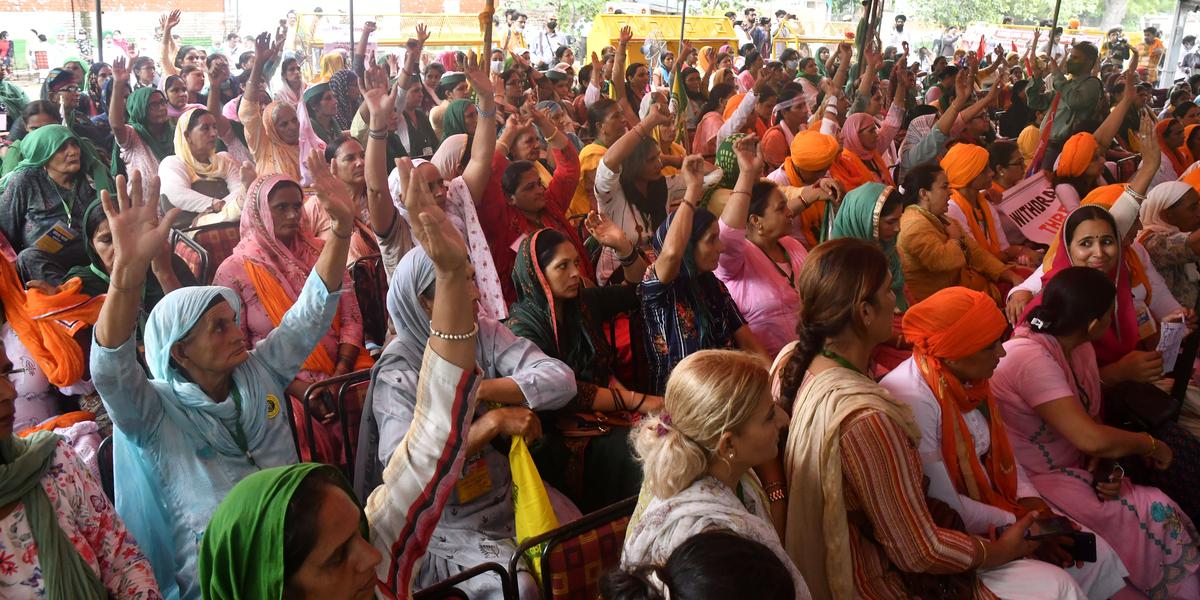
How women subverted traditional roles during the farm law agitations
The Hindu
Women’s participation in the protests against the three agriculture laws, gave them a chance to assert their disregarded position as farmers in the country, moulding the scope and character of the agitation for the better
Sangwan, Jagmati and Singh, Shamsher, ‘Women’s Participation in Protests against the Three Farm Laws in India Perspectives from the Ground’, Economic and Political Weekly, Vol 57, Issue no. 43, October 22, 2022
India has had a long history of protests against the ruling government, be it during the colonial rule of the British, or against the government in independent India. And despite the prevalent patriarchal system, women have actively participated in these protests alongside men. Women activists, politicians and leaders have emerged from even the most orthodox regions of the country.
While women have always found creative forms of protests within patriarchal structures, protests against the State or with a common cause gave them the opportunity to dissent openly, voice out their issues, and create a space for themselves within the larger discourse.
Many academic papers discuss the imperative role of women in protests. Among them Jagmati Sangwan and Shamsher Singh’s article ‘Women’s Participation in Protests against the Three Farm Laws in India Perspectives from the Ground’, documents and discuss the role played by women in one of the largest protests in world history against the three contentious agriculture laws passed by the government, which the farmers feared would lead to the abolishment of the minimum support price, leaving them at the mercy of big corporates. These protests were analysed through participant observation of the unfolding movement at different locations in and around Delhi. Documentation of the protests by the People’s Archive of Rural India, social media platforms like Youtube and independent media were also studied to understand the various aspects of the protests.
The authors explain that while not surprising, the enthusiastic participation of women in the farmers’ protest was a phenomenal event that unfolded during the course of the one-year-long agitation. The reasons behind their participation are rooted in the historic conditions and socio-economic factors that affect women throughout the country. Yet, it is notable that most women who participated, came from States where women, especially from rural regions, are disadvantaged by the patriarchal systems that constrain them. Though women play a crucial role in the agricultural process in these regions, they are denied land ownership and are expected to do unpaid or exchange labour.
With the coming of the farm laws, the already precarious condition of farmers in the country was expected to become even more unstable due to the lack of State protection mechanisms. Furthermore, the lack of food security directly affected women, who are already burdened with the responsibility of managing the domestic (food) needs of the family. Thus, the decision of the government seemed to have pushed them to the brink.
From being mere spectators of the movement, they joined the men demanding the repeal of the agriculture laws. They took up responsibilities of the production and distribution of food and bringing supplies to the sites. Many of them drove themselves in tractors to the protest sites, symbolising their status as farmers. Women’s dissent, though directed towards the government, questioned and challenged the society that burdens them disproportionately and acts oblivious towards their contributions to farming.













